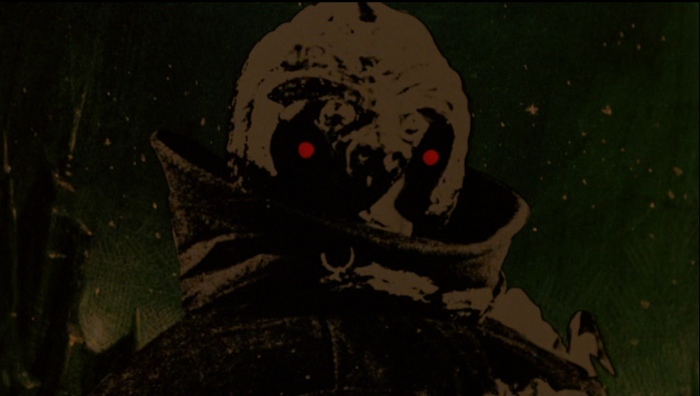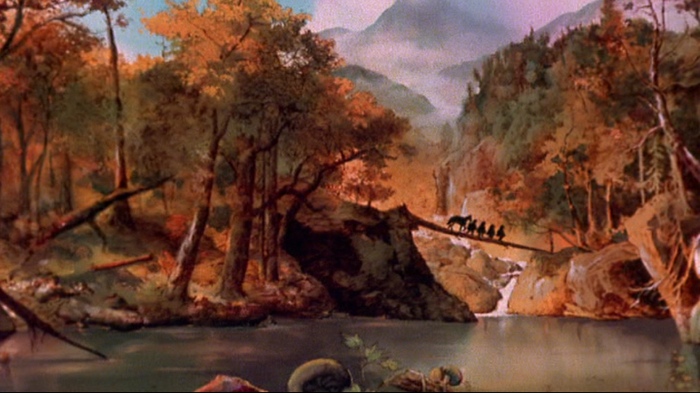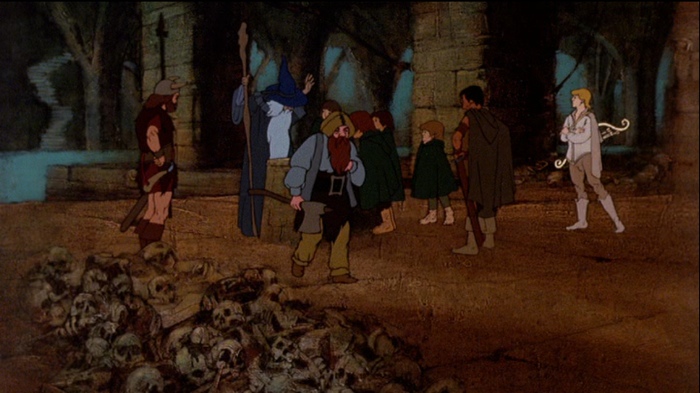That other Lord of the Rings Movie
Some films are good and some films are bad, and some films are such a thorough mix of good and bad that one struggles to decide whether the work as a whole is good or not. The 1978 animated adaptation of Lord of the Rings, directed by Ralph Bakshi, is just such a movie. Parts of the film look excellent, and it takes a few chances that do pay off, but there are a few major faults that may ultimately sink it.

To be fair, the film starts with a major handicap. Tolkien’s novel spans three books, and Peter Jackson’s famous adaptation takes three long movies to cover most, but still not all, of the material in those books. Bakshi’s version is just one movie, and covers the first two novels, The Fellowship of the Ring and The Two Towers. The final novel, Return of the King, is not covered here and no sequel was ever made, so this film doesn’t have a real ending; it just stops after the Battle of Helm’s Deep, and that alone makes me very hesitant to recommend it to anyone other than fans of the novels.
Even having cut out RotK, though, the plot has to move at a breakneck pace just to cover the first two novels. Much of the material is either cut, mentioned only briefly, or severely shortened. The plot is still intelligible, but fans will likely be disappointed at some scenes being passed over. For example, the significance of Aragorn’s broken sword is touched on at Elrond’s council, and the next time the audience sees it it’s been repaired, but when or exactly why is not explained. Character development is also economical; the film does okay with the time it has, and some characters like Aragorn and Boromir come across fairly well. Others, like Gimli and Legolas, are give just enough time to feel like real characters, but don’t have much depth, and a few, like Merry, Pippin, and anyone not in the Fellowship itself, are essentially just background.
The character designs are okay, but not memorable. The acting for most characters is good, though. The two performances that stand out most are Aragorn, who’s about perfect, and Sam, who sounds embarrassingly goofy. The character animation, though, is fluid, and there’s constant movement. The backgrounds are nothing short of gorgeous.

Backgrounds are exceptional throughout the film.
The music is sparse. Many scenes don’t have any, which is fine, and the music the film does have is workable, though again not especially memorable, though I do like the orcs’ war-song from Helm’s Deep.
The most visually striking aspect of the film is the use of rotoscoping, often used together with more traditional animation. I assume this was done mostly to save costs, and the final results vary wildly in quality. It’s often used when characters are moving quickly, mostly when running, which generally looks okay. It works best with the Black Riders, who look suitably strange and otherworldly. The orcs look acceptable, but sometimes clash visually with the animated characters. The Bree townspeople look terrible. Overall, I wish the film used this technique less, because it’s often jarring, especially the first few times the audience sees it, and though the Black Riders look great like this, I don’t think it adds much for the orcs or anything else.

Some of the rotoscope effects, like the orcs, look okay…

…others, well, don’t.
Finally, for those wondering how this adaptation compares to Peter Jackson’s version, it’s tough not to prefer Jackson’s which at least has a proper ending. I do think Lord of the Rings is well-suited to animation, though, and aside from the problems mentioned above there are a few things that I prefer about Bakshi’s film. Frodo isn’t totally useless in Bakshi’s, for one thing. For example, at the fight against the Black Riders at Weathertop, in Bakshi’s version Frodo draws his sword and takes a swing at the attackers. He’s rather ineffectual, of course, but at least he tries, whereas Jackson’s Frodo manages to drop his sword, fall backwards, and tries to scamper away slowly.
Also, Bakshi treats some scenes with more subtlety than Jackson. For example, when Frodo offers the Ring to Galadriel, in Jackson’s version we get a full close-up of her face, the whole screen darkens, and her voice is distorted, all of which makes the scene feel overdone. Bakshi simply relies on the actress’s delivery of the line, without the gimmicks, and the scene is more effective in his version. Similarly, in the mines of Moria, when Gimli hears of Dalin’s death, Jackson has him begin wailing. Bakshi has him simply bow his head and walk away slowly. Actually, Jackson turns Gimli into a largely comic-relief character, so I appreciate Backshi letting him have some dignity. Finally, both designs of Gollum are very similar to each other, but in Bakshi’s film he looks like an aged, emaciated hobbit, whereas in Jackson’s version Gollum doesn’t even look quite real.

Gimli hears of Dalin’s fate.
Overall, Bakshi’s Lord of the Rings is, if nothing else, an ambitious, unique film, so I ultimately did enjoy it. Given its flaws, though, I couldn’t really give a full recommendation, except to hardcore Tolkien fans or to those interested in a unique work of animation who are already familiar with the story from either the novels or at least Jackson’s adaptation.